Roll forming die is a specialized tool used in the roll forming process to shape and cut metal strips into specific shapes and sizes. It is an essential component of the roll forming process as it determines the accuracy and precision of the final product. A proper roll forming die is designed to ensure that the metal strip is formed correctly and consistently, resulting in high-quality parts that meet the required specifications and tolerances.
The importance of designing a proper roll forming die cannot be overstated. A poorly designed die can lead to variations in the final product, resulting in parts that are out of tolerance, visually defective, or unusable. This can result in wasted time, materials, and money, and can lead to increased customer complaints and reduced customer satisfaction.
Designing a proper roll forming die requires a thorough understanding of the roll forming process and the specific application. It involves selecting the appropriate materials, designing the tooling to the correct dimensions and profile shape, and ensuring proper alignment and setup of the roll forming machine. Attention to detail in the design process is critical to ensuring that the roll forming process is accurate and precise.
Overall, designing a proper roll forming die is critical to achieving accurate and precise results in the roll forming process. By carefully considering the factors involved in roll forming die design, manufacturers can produce high-quality parts that meet the required specifications and tolerances, resulting in increased customer satisfaction and improved profitability.
Material Selection of designing a roll forming die


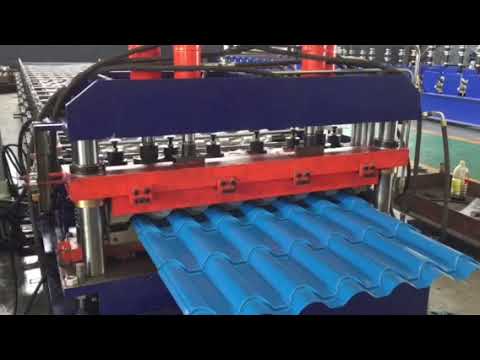
Material selection is an important consideration when designing a roll forming die. The material used for the die affects its durability, wear resistance, and performance in the roll forming process. Different types of materials can be used for roll forming dies, including tool steel, carbide, and ceramic. Each material has its own advantages and disadvantages.
Tool Steel: Tool steel is a popular material for roll forming dies due to its durability and toughness. It is a high-carbon steel that can withstand the stress and pressure of the roll forming process. Tool steel is also relatively inexpensive and easy to machine. However, tool steel can be prone to wear and fatigue, and it may require frequent maintenance and replacement.
Carbide: Carbide is a hard and wear-resistant material that is often used for roll forming dies. It has excellent resistance to wear and can maintain its shape and dimensional accuracy over a long period of time. Carbide is also able to withstand high temperatures and pressures, making it ideal for use in high-volume production environments. However, carbide is more expensive than tool steel and can be more difficult to machine.
Ceramic: Ceramic is an increasingly popular material for roll forming dies due to its exceptional wear resistance and durability. It is able to maintain its shape and dimensional accuracy even under high-stress conditions. Ceramic is also able to withstand high temperatures and can be used for high-volume production runs. However, ceramic is more expensive than tool steel and carbide, and it can be difficult to machine.
When selecting the material for a roll forming die, manufacturers should consider factors such as the expected production volume, the complexity of the parts being formed, and the cost and maintenance requirements of the material. By carefully considering these factors and selecting the appropriate material, manufacturers can ensure that their roll forming dies are durable, wear-resistant, and able to produce high-quality parts that meet the required specifications and tolerances.
Tooling Design of designing a roll forming die
-
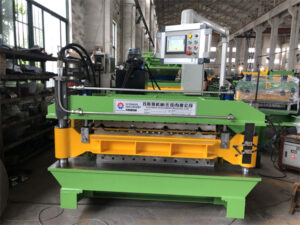 Double deck roll forming machine
Double deck roll forming machine -
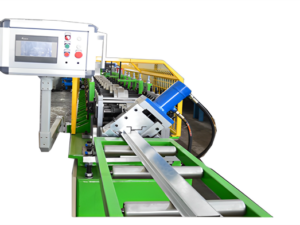 Omega roof batten Top hat channel roll forming machine
Omega roof batten Top hat channel roll forming machine -
 High speed PPGI corrugated sheet roll forming machine
High speed PPGI corrugated sheet roll forming machine -
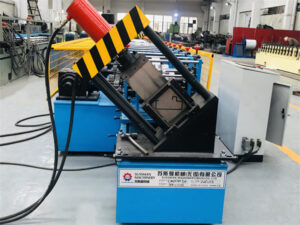 3mm Thickness Container House Cross Top Beam Roll Forming Machine
3mm Thickness Container House Cross Top Beam Roll Forming Machine -
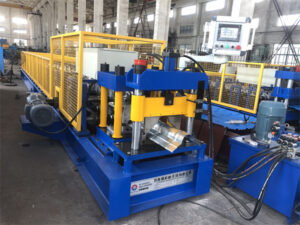 Aluzinc PPGI roof ridge cap roll forming machine
Aluzinc PPGI roof ridge cap roll forming machine -
 Roof Wall panel roll forming machine for decorative
Roof Wall panel roll forming machine for decorative
The design of the tooling used in the roll forming process is critical to achieving accurate and precise results. The tooling design includes elements such as profile shape, dimensions, and radii. Each of these elements plays an important role in the roll forming process and can affect the accuracy and precision of the final product.
Profile Shape: The profile shape of the tooling determines the shape and dimensions of the final product. The tooling is designed to gradually bend and shape the metal strip as it passes through the roll forming machine, resulting in a specific profile shape. The profile shape must be carefully designed to ensure that the final product meets the required specifications and tolerances.
Dimensions: The dimensions of the tooling determine the size and thickness of the metal strip used in the roll forming process. The dimensions must be carefully selected to ensure that the metal strip is formed correctly and consistently. Any errors in the dimensions of the tooling can result in variations in the final product, leading to rejection of parts or increased costs due to rework.
Radii: The radii of the tooling determine the curvature of the metal strip as it passes through the roll forming machine. The radii must be carefully selected to ensure that the metal strip is bent and formed accurately and consistently. Improperly designed radii can result in variations in the final product, leading to defects or non-conforming parts.
Proper tooling design is critical to achieving accurate and precise results in the roll forming process. The design of the tooling determines the accuracy and consistency of the metal strip as it passes through the roll forming machine. Any errors or mistakes in the tooling design can result in variations in the final product, leading to increased costs and reduced customer satisfaction.
To achieve the desired results, it is important to carefully consider each element of the tooling design and ensure that the tooling is properly designed and maintained. This includes regular inspection and replacement of worn or damaged tooling, as well as proper lubrication and maintenance of the roll forming machine. By paying close attention to the tooling design, manufacturers can ensure that their roll forming process is accurate and precise, resulting in high-quality parts that meet the required specifications and tolerances.
dimensions of designing a roll forming die

The dimensions of the tooling used in the roll forming process play a critical role in determining the size and thickness of the metal strip used in the roll forming process. The dimensions of the tooling must be carefully selected to ensure that the metal strip is formed correctly and consistently. Any errors in the dimensions of the tooling can result in variations in the final product, leading to rejection of parts or increased costs due to rework.
The selection of the appropriate dimensions of the tooling is critical to ensure that the final product meets the required specifications and tolerances. The tooling dimensions are dependent on factors such as the material being used, the shape and size of the desired final product, and the design of the roll forming machine. An error in the tooling dimensions can result in a deviation in the final product dimensions, resulting in parts that are out of tolerance or not fit for their intended purpose.
To ensure that the tooling dimensions are accurate, manufacturers use advanced software tools to simulate the roll forming process and predict the final dimensions of the product. This allows manufacturers to optimize the tooling design and identify any potential issues before the manufacturing process begins. The use of simulation software helps to minimize errors and reduce the risk of producing parts that are out of tolerance or not fit for their intended purpose.
In conclusion, the dimensions of the tooling used in the roll forming process play a critical role in ensuring accurate and consistent results. Any errors in the tooling dimensions can result in variations in the final product, leading to rejection of parts or increased costs due to rework. Therefore, manufacturers must carefully consider the selection of the appropriate tooling dimensions and use advanced simulation software to optimize the tooling design and identify any potential issues before the manufacturing process begins.
In summary, the proper design of roll forming dies is crucial to achieve accurate and precise results, and manufacturers must carefully consider the different factors involved in tooling design to produce high-quality parts that meet the required specifications and tolerances.
